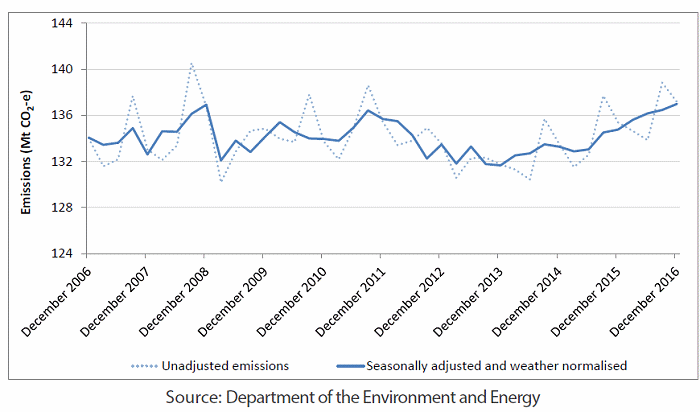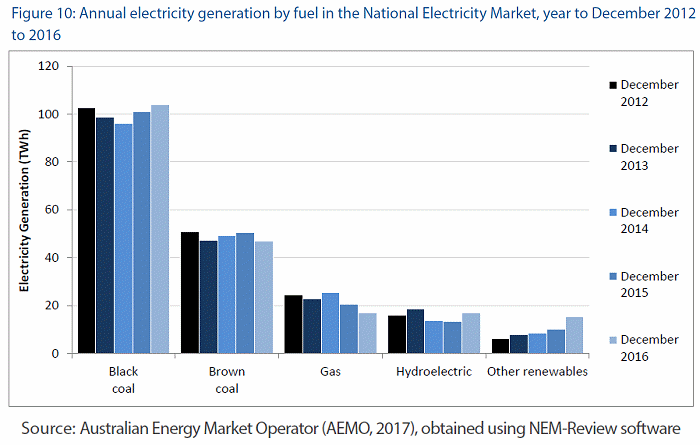After accusations of an emissions cover-up, Australia’s Federal Government has finally released “missing” quarterly greenhouse gas emissions data.
Last Friday, the Australian Conservation Foundation (ACF) said Freedom of information documents it had obtained indicated the government was withholding national greenhouse pollution data from as far back as July 2016. A quarterly update hadn’t been published since late July.
“It seems Turnbull’s government is so divided and paralysed on climate policy that it will go to extreme lengths to remove global warming entirely from the national debate on energy – including sitting on pollution data,” said ACF CEO Kelly O’Shanassy.
ACF expressed concern the Turnbull government is failing to meet Australia’s Paris commitment to a 2-degree limit on global warming.
The revelation by ACF, reportedly earlier by Fairfax, appeared to have an effect – the National Greenhouse Gas Inventory was released on Friday, incorporating December and September quarters.
The update indicates national emissions levels, excluding the Land Use, Land Use Change and Forestry (LULUCF) sector, increased 0.4 per cent in the December quarter compared to the previous quarter on a seasonally adjusted and weather normalised basis. For the year to December 2016, emissions increased 1.4 per cent on the previous year.
Electricity generation remained the largest source of emissions in the national inventory, accounting for 35% of emissions in the year to December 2016. However, annual emissions from electricity decreased by 0.3%, partially due to weaker demand.
The report indicates Australia’s energy mix is rapidly changing. While generation from brown coal dropped by 3.6 TWh (7%) in the National Electricity Market (NEM), generation from black coal increased 3.2 TWh (3.2%). Gas-fired electricity generation dropped 3.7 TWh (18.1%).
Generation from renewables increased significantly. Hydro saw an increase of 3.7 TWh (27.6%) and wind and other renewables (excluding small-scale solar power) grew by 5.0 TWh (48.9%) in the year to December 2016.
A sector where there was an increase was in fugitive emissions, which jumped by 6.0% over the year to December 2016. Fugitive emissions originate from the production, processing, transport, storage, transmission and distribution of fossil fuels. The Update states the increase was driven by an increase of 27.8% in natural gas production.
The Quarterly Update of Australia’s National Greenhouse Gas Inventory can be viewed here.



 RSS - Posts
RSS - Posts



The use of black coal has increased which helped greenhouse gas emissions to rise to. Relying more on renewable resource will surely help in 2017.